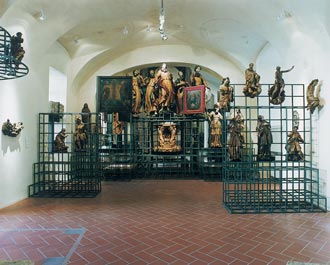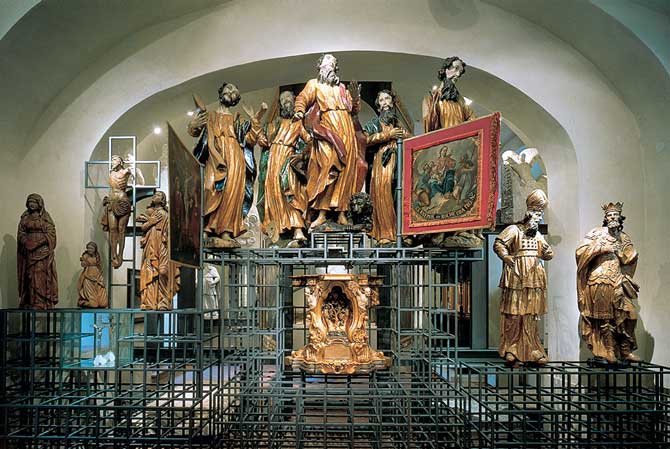Permanent Display 17. The Baroque Altars of St. Mark’s
 In the 17th century the parish church of St. Mark had eleven small altars. According to an exhaustive report written by the visiting Canon Pepelko in 1742, the church had thirteen altars with mensas and a three-storey superstructure.
In the 17th century the parish church of St. Mark had eleven small altars. According to an exhaustive report written by the visiting Canon Pepelko in 1742, the church had thirteen altars with mensas and a three-storey superstructure.
The Baroque interior of the comparatively small church was very colourful with its many altars, paintings and guild standards. Most of the altars were erected by the guilds of Gradec, which sometimes dedicated it to a different saint and always displayed their standard on the altar.
The altars were the work of local masters from the workshop of Bishop Branjug of Kaptol and of Gradec sculptors and painters.
The altar of St. Cross has a historic significance for Zagreb because town magistrates and other municipal officials, as well as Croatian bans (governors) were sworn in there.

In the second half of the 19th century, the Baroque altars of St. Mark’s no longer satisfied the taste of the time, and the Town Council decided that they should be “redecorated as befits the dignity of the place and the taste of the modern age”. These Neo-Gothic altars were in their turn removed during the last restoration of the church (1922-1937), in which it was given back its original Gothic character.
Slavko Šterk

